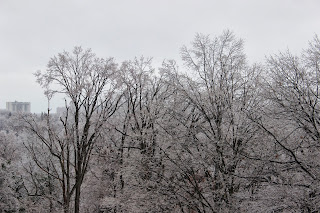Modern technology helps us to reach as far as moon and Mars. Satellites and iridium satellites give us instant access to every corner of the world.
Iridium are communications satellites
The Iridium satellite constellation is a large group of satellites providing voice and data coverage to satellite phones, pagers and integrated transceivers over Earth's entire surface. So far 66 Iridium Satellites undertaking the earth communications. So sky is quite busy all the times.Add weather networks, military and commercial satellites.Add scientific devices such as Hobble telescope.Add high altitude jets and rockets. Add the biggest international scientific station in space (ISS).Add the waste from ISS including washroom waste which shoot toward the earth to be burn by contacting to the air.Including all flying objects you may conclude that a huge amount of precious metals and debris flying over us.It is true.So it is time to think about space jam and space junks.
Satellites are tracked by United States
Space Surveillance Network (SSN), which has been tracking every object in orbit over 10 cm (3.937 inches) in diameter since it was founded in 1957 (after former Soviet Union launched Sputnik).There are approximately 3,000 satellites operating in Earth orbit, according to the US National Aeronautics and Space Administration (NASA), out of roughly 8,000 man-made objects in total. In its entire history, the SSN has tracked more than 24,500 space objects orbiting Earth. The majority of these have fallen into unstable orbits and incinerated during reentry. The SSN also keeps track which piece of space junk belongs to which country.
Satellites have an operating lifespan between five and 20 years. As of 2008, the former Soviet Union and Russia had nearly 1,400 satellites in orbit, the USA about 1,000, Japan more than 100, China about 80, France over 40, India more than 30, Germany almost 30, the UK and Canada 25, and at least ten each from Italy, Australia, Indonesia, Brazil, Sweden, Argentina, Saudi Arabia, and South Korea.
According to Sixth European Conference on Space Debris(22-25 April 2013 Darmstadt, Germany),
Since 1957, more than 4,900 space launches have led to an on-orbit population today of more than 22,000 traceable
objects, with sizes larger than 10 cm. Approximately 1,000 of these are operational spacecraft. The remaining 94% are space debris, i.e. objects which no longer serve any useful purpose. About 64% of the routinely tracked objects are fragments from some 250 breakups, mainly explosions and collisions of satellites or rocket bodies. In addition, an estimated 700,000 objects larger than 1 cm and 170 million objects larger than 1 mm are expected to be in Earth orbits.
Due to relative orbital velocities of up 56,000 km/h, centimeter-sized debris can seriously damage or disable an operational spacecraft, and collisions with objects larger than 10 cm will lead to catastrophic break-ups, releasing hazardous debris clouds of which some fragments can cause further catastrophic collisions that may lead to an unstable debris environment in some orbit regions.
So the lower orbits or lower heavens are not a safe place any more. We should think about a cleanup strategy and space management otherwise we have to go higher and higher in space while carrying space
junks
with us!
A solar array of the International Space Station hit by an unidentified object and made a hole through the panel. Is it happened by a stray stone or a space junk?
https://www.facebook.com/AstronautChrisHadfield






















































